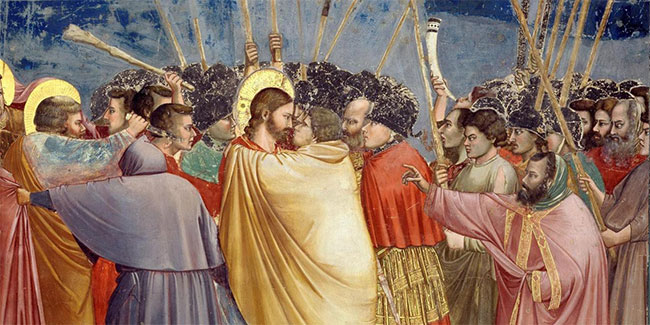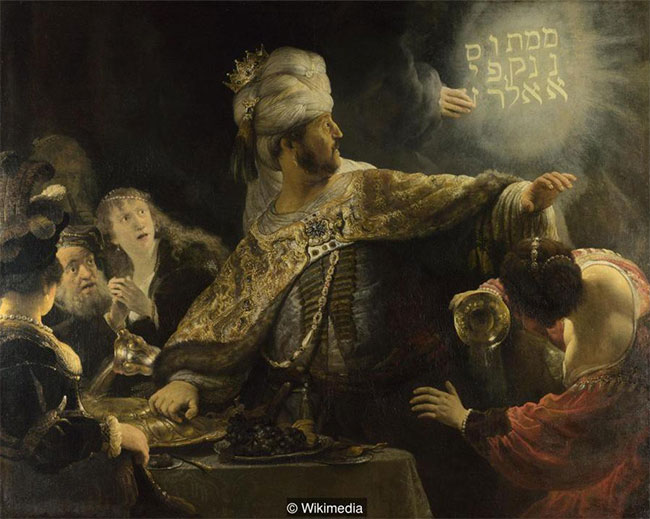The painful truth behind 'Indian gold' has fascinated Western painting for centuries
Unlike today, full of colors, painters before the 20th century had very little pigment. In order to get the best work, they have to put a lot of effort into finding colors.
Yellow: From the representation of betrayal to passion
If the ancient East saw gold as royalty, then the West saw it as a symbol of betrayal. Most of the paintings of Judas Iscariot, the apostle of the Renaissance Lord (15th-17th centuries) took gold as their main color.
Before and during the Renaissance, Western painting was mostly around religious themes. However, since the turn of the 18th century, it began to expand. The famous painting names were born, deceiving the goal of serving the church to the side, comfortably swinging the palm for their own passion.


Before the 18th century, yellow was framed in the concept of "betrayed colors".
Entering the 1860s, thanks to the appearance of such artists as Claude Monet (France), JMW Turner (England), the impressionist school was born, breaking all the existing painting frameworks. Thanks to them, the yellow color defeated the prejudice, became dazzling like dawn, and was especially loved by the palm men.
Starting with Turner's "The Angel Standing in the Sun" , the yellow color radiates in countless 19th century painting masterpieces. It is haunting, painful in the Starry Night ( The Starry Night of the great artist Vincent van Gogh (Netherlands), has just exploded the sophistication of The Age of Innocence by Joshua Reynolds (England) and Carnation, Liu Ly, Liu, and China. Pink (Carnation, Lily, Lily, Rose) by John Carner Sargent (USA).

"The Angel called the Sun" by JMW Turner.

Vincent van Gogh's "Starry Night".

"Carnations, Glass, Glass, Roses" by John Carner Sargent.

"Innocent age" by Joshua Reynolds.
"Indian Gold" - The fever of the times
In the natural world, gold is a familiar color. Artists of ancient times often took loess (yellow clay) to paint. However, yellow from the soil is a bit monotonous and dark. So when the impressionist school was born, people craved a golden color with all the colors, from the brightest to the splendid, the most dazzling.
Then suddenly, between the pigments and synthetic dyes emerged a treasure. Those are yellow blocks and ingots shining brightly. People call it "Indian gold".
The reason is simple, because this yellow comes from India. Some say that they are crystalline urine of snakes. Someone said, they are made from camel bile.

The yellow of India is extremely famous .
Everyone is frantically looking to buy "Indian gold". Unlike the yellow color of clay, which is both dark and difficult to adjust, "Indian gold" meets all the requirements of the artist. Just a little flexible, they can turn it from lemon yellow shimmering to warm orange.
In Turner's Angel of the Sun, the "Indian gold" is more brilliant than dawn. In the midst of Reynolds' innocent Age, it was so tender. Going to Sargent's work is extremely warm .
Crystallization of cow urine: Suffering of cows for a lifetime must eat mango leaves
Not just a great painter or an amateur painting, Western frantic "Indian gold" , spread on paper, planks, walls. They do not know that what they cherish with both hands and soul is actually just . cow urine .
In India, the origin of "Indian gold" is Munger, a land in Bihar state. In order to get the color of gold, people forced cows to eat mango leaves all their lives.

In essence, the urine of cows
Naturally, mango leaves are not on the favorite menu of herbivores, because in the leaves with toxins, eating more will cause poisoning. There are mango leaves after "passing" the cow's digestive system will be broken down into euxanthic acid with yellow pigment . The longer you eat mango leaves, the more sick the cow is, malnourished. But the urine it emits is extremely bright, to the point of sparkling.
After "harvesting" cow urine specialized in eating mango leaves, it is decanted, boiled to evaporate all steam, dried, pressed into blocks. In India, these " high" urine urine lumps are called "piuri".
It took 25 years to free cows
It was not until 1883 that the West knew that "Indian gold" was just urine. The first work belonged to TN Mukharji, an employee of Kew Royal Botanical Garden. Because listening to so many unconfirmed rumors about the "Indian gold" origin , the director of the Royal Botanic Gardens Kew sent Mukharji to the verification site.

The cows are forced to eat only one type of mango leaves that are extremely weary, painful, miserable.
After witnessing firsthand the process of creating "Indian gold", Mukharji immediately wrote a detailed report, sent to the Art Association in London (UK). He emphasized that cows were forced to eat only one type of mango leaf that was extremely thin, painful, miserable.
But despite the fact that the opening of the Western art still ceaselessly thirsted for "high" cow urine. It took another 25 years for people to give up.
Today, "Indian gold" is no longer available. But the "essence" of cows eating mango leaves is still full of immortal paintings with time.
- The process of making gold inlaid roses and the know-how
- The interesting thing about gold may be unknown to you
- Interesting things few people know about the Moon
- Finding gold jewelry 13 centuries ago
- The Indian famous cow urine contains gold and medicinal drugs
- Wander on the field, suddenly picked up a 1.4kg gold piece
- Painter paints with ... unique sewing machines in the world
- The truth behind the gold-plated dishes of the super rich world
- The truth about Chinese woman's leg tight heels
- Strange secret hidden behind 7 'haunted' paintings
- China is rewarding 1,500 USD to decode the ancient gold coin
- Gold is formed like?
 'Fine laughs' - Scary and painful torture in ancient times
'Fine laughs' - Scary and painful torture in ancient times The sequence of numbers 142857 of the Egyptian pyramids is known as the strangest number in the world - Why?
The sequence of numbers 142857 of the Egyptian pyramids is known as the strangest number in the world - Why? History of the iron
History of the iron What is alum?
What is alum?